Windsor High and the Battlefields
6th March 2023
Written by Mr Hamilton
It was half five in the morning at the end of half term when students, staff and parents all made their way to Windsor High School and Sixth Form. Bleary eyed, suitcases set onto coaches and seat belts buckled, we set off for an exhilarating six hour journey down the motorway, over the Channel Crossing, and into France with one destination in mind: Belgium.
The trip to the Battlefields of Belgium, to enhance the learning and cultural capital of our students, had been a yearly tradition at Windsor that was only stopped by a pandemic. With so many students unable to attend for so long, we opened the trip up to our biggest cohort yet: Years 10-13.
Here’s what we got up to, what it was like, and why it became such an unforgettable experience.
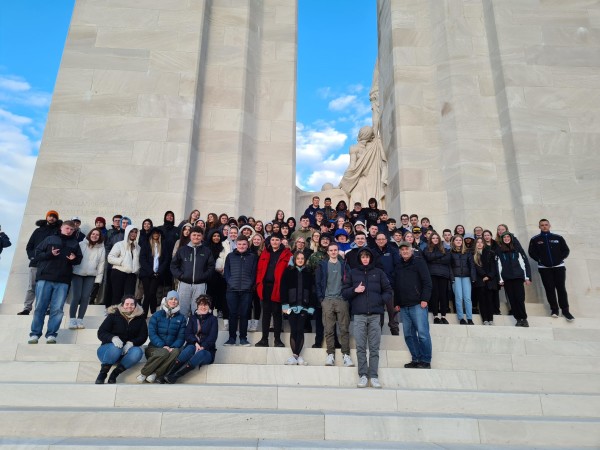
Day One
We made it across the Channel in great spirits and arrived in Ypres, and that’s where the trip really started. The coaches split in two and we tackled the first memorials in separate groups, visiting war memorials in Geluveld and the Memorial Museum Passchendaele.
Geluveld was dedicated to the Worcestershire Regiment, Windsor’s local group who would have fought in the First World War, and the South Wales Borderers, who fought to defeat their enemy at this place in Belgium. There was a towering chateau in the background, whose acres the soldiers would have bravely stormed through.
The Passchendaele Memorial Museum was a beautiful building - as were all of the mighty estates that we passed while on The Continent - and it was dedicated to the soldiers who lost their lives in the 1917 Battle of Passchendaele. Despite the loss of life, only a few kilometres of territory were gained. Students were impressed by our tour guide’s ability to bring to life the sights and sounds of the First World War, and his connections to those working the museum resulted in students being given a demonstration in how a Lee Enfield rifle works, why our soldiers used khakis (an Urdu word, which surprised the whole team of History teachers, too), and how medical utensils developed during the period. It was here where we walked through a trench that showed the differences between German and British design architecture, which really hit home the dire conditions that soldiers suffered for up to four years.
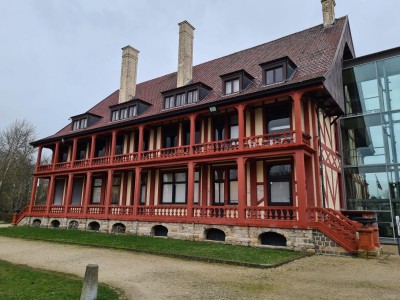
And then we set off once more. Teachers counted everyone on board and we zipped up to the Poppies Hotel in Ypres, a short walk away from a restaurant that served up a beautiful bolognese. We were all dressed to the nines on the first evening - but this wasn’t for the restaurant’s dress code. Shortly after we’d eaten, the group travelled to Menin Gate, a grand archway that was the stage for soldiers to push back against the Axis forces. As a result of their bravery, the people of Ypres honour this with a ceremony known as the Last Post - a celebration of their actions that takes place every evening at 8pm - and has done since 1928, only pausing for the Second World War.
A number of our students were chosen to lay a wreath to show their respect. Whether they took part or not, we could not have asked for a better cohort to represent the school at this poignant event.
A final quick visit to a Belgian chocolate shop later and we retired to Poppies Hotel. Day One was done. Though we were exhausted, it was a day well spent.
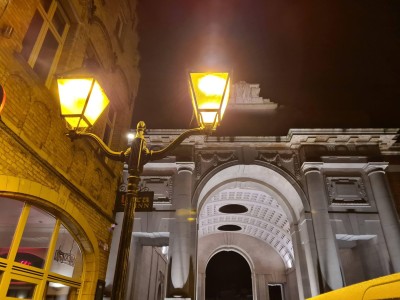
Day Two
Day two of the Battlefields trip was just as jam-packed; it was dedicated to the battles of the Somme. However, en route, we stopped at a number of memorial cemeteries, including Thiepval War Memorial. This was a towering monument dedicated to thousands of soldiers from regiments from all over, and students spent time trying to track down relatives who lived and died over 100 years ago. Another cemetery, visited earlier in the day, took us to the grave of a relative shared by Mr Langford and one Sixth Form student. A wreath was laid and a reading was made; learning about the individuals in the war, and their stories, throughout the weekend, was a moving experience for us all.
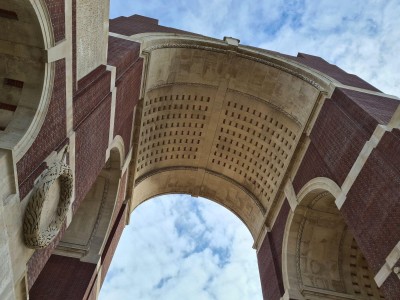
What I felt was especially moving was Newfoundland Park, dedicated to Canadian soldiers. This was just one battlefield of the Somme that involved thousands of unnecessary deaths and culminated in a small amount of territory being taken by The Allies - but over a period of five months, rather than the weeks that had been envisioned. We saw similar sights at Vimy Ridge, and one of the final grounds visited were those at the Musee Somme 1916 Museum, Albert. Here was an underground bunker, established in the Middle Ages to protect the local French residents from invasion, and used in some way during the First World War, though records have not yet been found to suggest how. It was this that made the whole trip even more interesting: History is constantly changing and evolving, with new discoveries being made every day. Even now, shells and old artillery are still being found in Belgium, so our understanding of the First World War continues to evolve.
In the underground bunker - or, really, it was more of a tunnel - were hundreds of stories being told by genuine equipment (guns, grenades, artillery, uniforms - everything you can think of) that were used during The Great War. By this point, we were ready to return to the Poppies Hotel for another evening meal. Students spent time after the meal writing diaries on their experiences, which they will have to look back on and remember their trips for the rest of their lives.
Day Three
The final day of our tour of the Battlefields was in Ypres for the first three hours, and we were able to go to Essex Farm, where John McCrae wrote his famous In Flanders Field poem. Students were shocked that McCrae had originally thrown his draft away, thinking it a poor attempt at poetry, but it was rescued by a fellow soldier, and is now one of the most famous First World War pieces of poetry of all time.
Next was the Langemark German Cemetery. Personally, I was so happy that we were able to come here, as well as the memorials dedicated to The Allies, because the site was such a different one to what we had already seen. Gravestones were short, close to the ground, and there was a mass grave for over twenty thousand German soldiers.
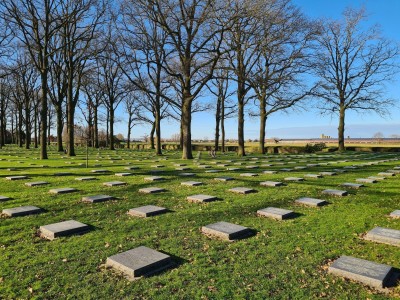
The final stop? Tyne Cot British Cemetery. This is the largest commonwealth war cemetery in the world, and it shows. Graves stretched for what felt like miles, names emblazoned onto the walls. Students were given 20 minutes to wander the site and absorb the history of it all, before we boarded the coach for a final time and made the sleepy journey back to Windsor.
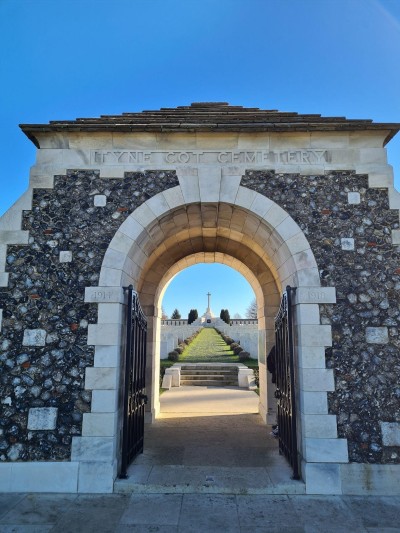
The Battlefields Trip was the talk of the school on the first Monday back after half term. The atmosphere was electric; it truly was an experience that students, and staff, will never forget.

